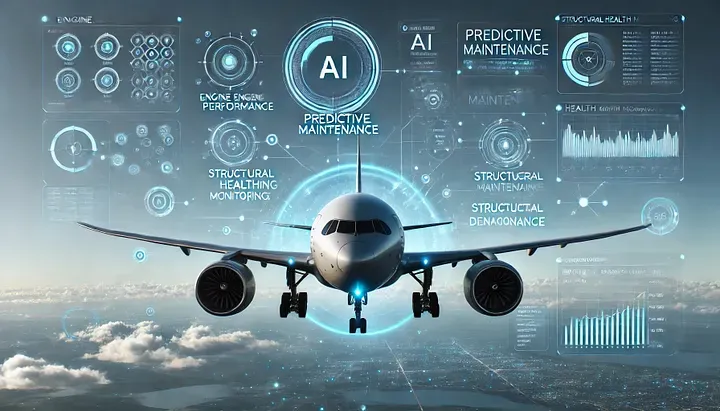Enhancing Air Travel Safety Through Artificial Intelligence

In the rapidly evolving landscape of technology, artificial intelligence has emerged as a transformative force, revolutionizing various industries, including aviation. The integration of AI in air travel has the potential to significantly enhance safety measures, streamline operations, and reduce human error. This essay explores the multifaceted ways AI can assist in making air travel safer, from predictive maintenance and air traffic management to passenger screening and in-flight safety.
One of the most critical aspects of air travel safety is ensuring that aircraft are in optimal condition. AI-powered predictive maintenance systems can analyze vast amounts of data from sensors embedded in aircraft components to detect signs of wear and tear long before they lead to failures. By predicting potential issues and scheduling maintenance proactively, airlines can prevent mechanical failures that could compromise safety. For instance, machine learning algorithms can identify patterns in engine performance data, alerting maintenance crews to anomalies that might indicate a pending malfunction. This not only enhances safety but also reduces downtime and operational costs.
Efficient air traffic management is essential for maintaining safe distances between aircraft and preventing collisions. AI systems, with their real-time processing capabilities, can process data from radar, satellite, and aircraft transponders to optimize flight paths and reduce the risk of mid-air collisions. Advanced AI algorithms can predict potential conflicts in crowded airspace and suggest alternative routes to air traffic controllers. Additionally, AI-powered collision avoidance systems on aircraft can provide pilots with real-time alerts and automatic evasive maneuvers, further enhancing safety.
Ensuring passengers’ safety starts on the ground with thorough and efficient screening processes. AI, with its comprehensive approach, can significantly enhance the accuracy and speed of security checks at airports. Machine learning algorithms can analyze X-ray images of luggage to identify potential threats more effectively than traditional methods. Facial recognition technology, powered by AI, can expedite identity verification while ensuring that no unauthorized individuals board the aircraft. Furthermore, AI can analyze passenger behavior patterns to flag suspicious activities, enabling security personnel to intervene proactively.
Once in the air, maintaining in-flight safety is paramount. AI can assist pilots by providing real-time weather updates and turbulence forecasts, allowing smoother and safer flights. AI systems can also monitor the health and well-being of passengers, particularly those with medical conditions, by analyzing data from wearable devices. In an emergency, AI can guide cabin crew through step-by-step procedures to ensure passengers’ safety. Moreover, AI-driven virtual co-pilots can assist human pilots in complex decision-making processes, reducing the risk of human error.
AI can be crucial in addressing human factors that impact air travel safety. Pilot fatigue, stress, and cognitive overload are significant concerns. AI can monitor pilots’ physiological and psychological states through sensors and provide real-time feedback or suggest breaks to mitigate fatigue. Furthermore, AI-driven simulators can provide pilots with realistic training scenarios, enhancing their skills in handling emergencies and unexpected situations. These simulators can adapt to individual learning styles, ensuring comprehensive and personalized training.
In the unfortunate event of an incident, AI can aid in emergency response and post-incident analysis. AI-powered communication systems can ensure swift and accurate coordination between the flight crew, air traffic control, and emergency services. AI can also analyze data from flight recorders and other sources to determine the root causes of incidents, providing valuable insights for improving safety protocols and preventing future occurrences.
Integrating artificial intelligence into air travel can potentially revolutionize safety measures across the aviation industry. AI offers many solutions to enhance air travel’s safety and efficiency, from predictive maintenance and air traffic management to passenger screening and in-flight safety. By leveraging AI’s capabilities to analyze vast amounts of data, predict potential issues, and assist in decision-making processes, the aviation industry can achieve unprecedented levels of safety and reliability. As technology advances, the ongoing collaboration between human expertise and AI will be essential in creating a safer and more secure future for air travel.
Join Us Towards a Greater Understanding of AI
By following us and sharing our content, you’re not just spreading awareness but also playing a crucial role in demystifying AI. Your insights, questions, and suggestions make this community vibrant and engaging. We’re eager to hear your thoughts on topics you’re curious about or wish to delve deeper into. Together, we can make AI accessible and engaging for everyone. Let’s continue this journey towards a better understanding of AI. Please share your thoughts with us via email: marty@bearnetai.com, and don’t forget to follow and share BearNetAI with others who might also benefit from it. Your support makes all the difference.
Thank you for being a part of this fascinating journey.
BearNetAI. From Bytes to Insights. AI Simplified.
Categories: Artificial Intelligence (AI), Technology and Innovation, Aviation Safety, Security and Screening, In-Flight Safety, Human Factors and Training, Emergency Response and Incidence Analysis, Data Analysis and Predictive Analytics
The following sources are cited as references used in research for this BLOG post:
Machines of Loving Grace: The Quest for Common Ground Between Humans and Robots by John Markoff
The Big Nine: How the Tech Titans and Their Thinking Machines Could Warp Humanity by Amy Webb
Ethics of Artificial Intelligence and Robotics edited by Vincent C. Müller
© 2024 BearNetAI LLC